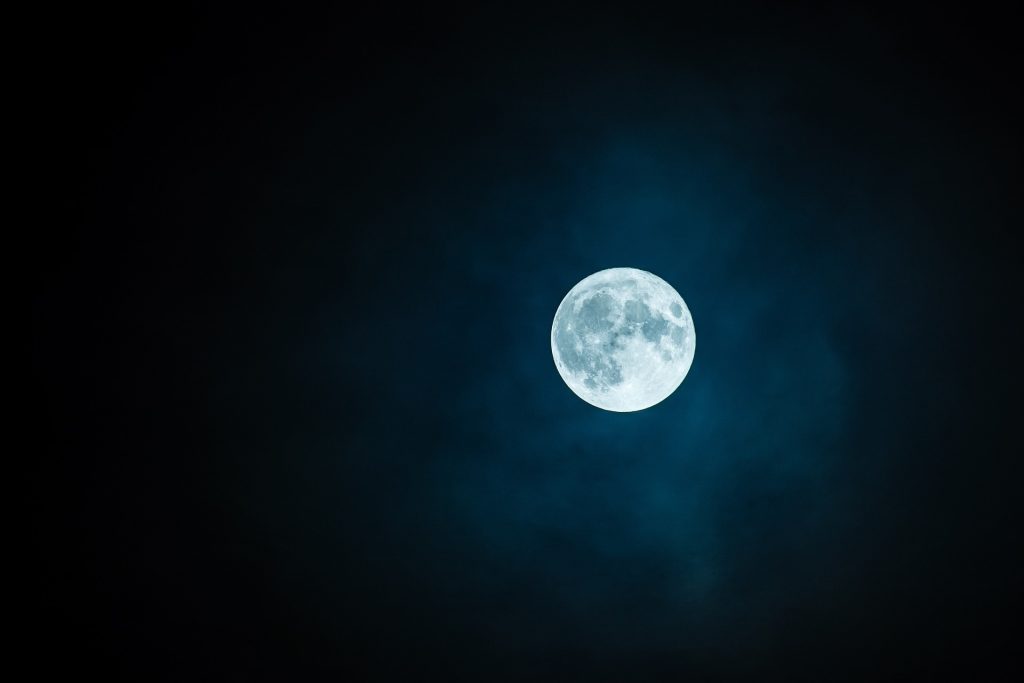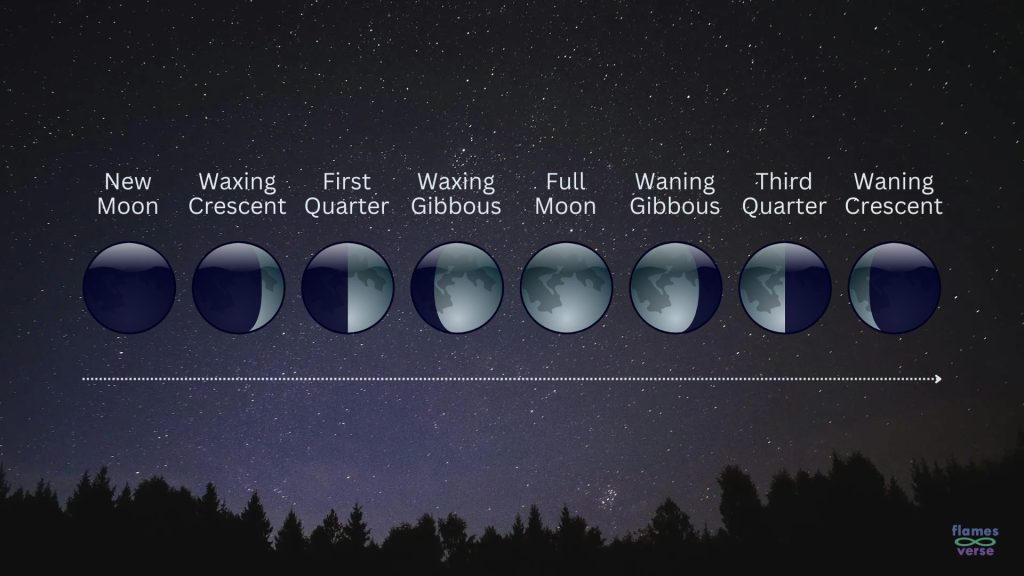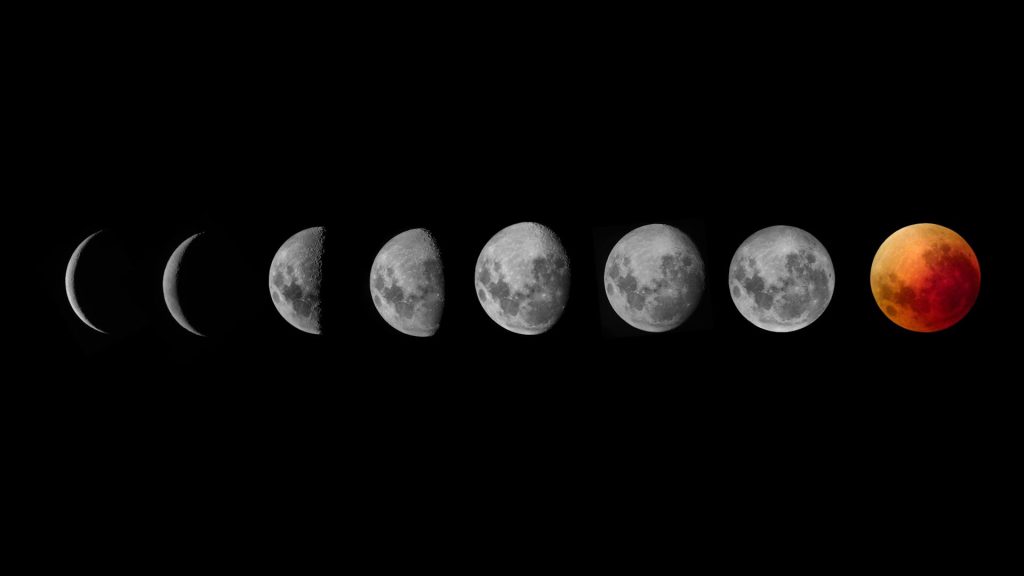Recently, while I was on a walk, the Moon was there with me again… a big, Full one, basking in its own magic light. It never ceases to amaze me, no matter how many times I’ve seen it over the years. The effect is even more intense now that I can’t see it straight from my window… and I used to sleep under its glowy blanket when I was younger.
The walk sparked a thought on the Moon phases (also known as lunar phases) and life phases, allowing me to reflect on some things that have happened, with a conclusion coming in gracefully…
So, I said to myself…
“Why not dedicate an article to it all?”
I even remembered the following piece of music (below). I don’t know too much about the series where it’s from, but I did enjoy the piece over the years. I’ve also listened to it while writing this article. 🙂
Music: LEVI Music – [Dear Moon] piano cover |’나의 아저씨’ OST
Now, the Moon is far more than just a celestial body orbiting the Earth. The ever-changing, eight lunar phases in the night sky have inspired myths, guided calendars, and sparked scientific investigation.
From the barely visible New Moon to the luminous Full Moon, each phase tells a story. This celestial dance doesn’t just light up our nights; it shapes our planet in profound ways, influencing tides, wildlife, and perhaps even our own rhythms and behaviour.
Let’s dive into some more information on it.

Image by Robert Karkowski from Pixabay
Table of Contents
Historical Roots of Moon Observations
The Babylonians were among the first to record detailed observations of lunar cycles, forming the basis for some of the earliest calendars. Ancient Egyptians used the lunar cycle to predict the flooding of the Nile, a crucial event for agriculture and society. The Mayans crafted incredibly precise lunar calendars, guiding their religious ceremonies and daily life.
In many ancient cultures, the Moon was deified. The Greeks worshipped Selene, the goddess of the Moon, alongside her brother Helios, the Sun god. Chinese culture viewed the Moon as a symbol of balance and harmony, a concept celebrated during festivals like the Mid-Autumn Festival.
The Moon’s Impact on Earth and People
The Moon’s most noticeable effect on Earth is the tides. Its gravitational pull causes water in the oceans to bulge out on the side facing the Moon and the opposite side, creating high tides. Areas in between experience low tides. This cycle occurs roughly every 12 hours as Earth rotates.
The Sun also influences tides, but to a lesser extent. When the Sun, Moon, and Earth align during Full or New Moons, their combined gravitational forces create stronger, spring tides. During First and Last Quarters, when the Sun and Moon are at right angles to Earth, we experience weaker, neap tides.
Tides play a crucial role in coastal ecosystems, influencing marine life, sediment transport, and human activities like fishing and shipping.
Many people believe that the Moon affects more than just the tides; it also influences human emotions, behavior, and even sleep patterns. While scientific studies have shown mixed results, the belief in a lunar effect persists, especially around the Full Moon.
In astrology, the Moon is considered to govern our emotional lives. Its placement in an individual’s natal chart is said to reveal insights into their inner world, intuition, and subconscious mind. Full Moons, for example, are often linked to heightened emotional sensitivity and clarity, while New Moons are seen as times to focus inward and set new intentions.
People also use the Moon’s phases to guide daily activities. Some gardeners use the Moon’s phases to determine the best times for planting and harvesting. The Waxing Moon is seen as ideal for planting above-ground crops, while the Waning Moon is thought to be better for root crops and pruning.
Many people set their goals and projects in alignment with the lunar cycle, starting new ventures during the New Moon and completing them around the Full Moon. The Waning phases are a great time for reviewing progress and making adjustments.
The Science and the Appearance of the Moon Phases
The Moon’s phases occur because the Moon orbits the Earth, reflecting the sunlight differently based on its position relative to us; so, the moonlight that we see on Earth is the sunlight, reflected off the Moon’s gray-white surface. Since the Moon rotates, it always face us with the exact same side.
The entire cycle, from one New Moon to the next, takes about 29.5 days, and is known as a synodic month.
Here’s a breakdown of the Moon’s phases:
- New Moon: The Moon is between Earth and the Sun, invisible to us.
- Waxing Crescent: A sliver becomes visible as it moves from the Sun’s glare.
- First Quarter: Half of the Moon is visible.
- Waxing Gibbous: More than half is illuminated as Full Moon approaches.
- Full Moon: The entire face is lit up, visible all night.
- Waning Gibbous: The Moon begins to shrink in visibility.
- Last Quarter: Again, half of the Moon is visible, but the opposite side.
- Waning Crescent: A final sliver before the cycle restarts.

Photo by tommy haugsveen / Image by Clker-Free-Vector-Images from Pixabay / Edit by Author of this blog post
Symbolism of the Moon Phases (Moon Phases Meanings)
Each phase of the Moon carries deep symbolic meaning, often tied to cycles of life, growth, and renewal.
Here are the meanings:
- New Moon: A symbol of new beginnings, renewal, and setting intentions. It represents the blank canvas, a fresh start.
- Waxing Crescent: Associated with growth, progress, and taking actionable steps toward goals.
- First Quarter: Represents challenges and decisions. This is a time to overcome obstacles and strengthen resolve.
- Waxing Gibbous: Symbolizes refinement and fine-tuning. It’s a phase of self-improvement and adjustment.
- Full Moon: The culmination of efforts, representing completion, illumination, and celebration. It’s often seen as a time for heightened intuition and emotional clarity.
- Waning Gibbous: A phase of gratitude and reflection, reviewing the results of one’s efforts.
- Last Quarter: Symbolizes release, letting go of what no longer serves us, and making space for future intentions.
- Waning Crescent: A time for rest, contemplation, and closure, as the cycle prepares to start again.
These symbolisms have greatly influenced the art, literature, and spiritual practices across different cultures and throughout the history.
Moon Rituals and Practices
The Moon has always been linked to spiritual practices. Different phases are believed to carry distinct energies, making certain times better for specific rituals. I’ve listed some of them below.
New Moon Rituals
A powerful time for setting intentions for the upcoming lunar cycle. Manifestation rituals, meditation, and journaling are popular practices during this phase. Writing down goals or desires, and visualizing their fulfillment, is a common New Moon ritual.
Waxing Moon Rituals
As the Moon grows in light, so does the energy for action and progress. This is the best time for rituals focused on growth, motivation, and planning. Lighting candles or using some other lighting of your preference, creating vision boards, or practicing affirmations can help channel this energy.
Full Moon Rituals
The Full Moon is often considered a time of heightened energy and illumination. Many spiritual traditions involve cleansing rituals under the Full Moon; such as bathing in its light or creating moon water by placing water under the Moon’s light overnight. Some also use this phase for releasing what no longer serves them, through burning written lists or symbols of negative energy.
Waning Moon Rituals
As the Moon’s light decreases, this is a time for letting go, releasing negative habits or emotions, and preparing for closure. It’s a phase of introspection and reflection. Rituals during this time might involve clearing clutter from the home, meditation, and grounding exercises to stabilize energy.

Photo by Astrofotos PB
What’s your opinion on this topic? 🙂
Feel free to leave a comment below!
More Articles
- The Red Moon (Blood Moon): Mystical Phenomenon and Spiritual Significance
- Mercury Retrograde: What It Means and Why It Matters
- October Theory: Embracing Change and Opportunity
- The 11:11 Portal: A Gateway to Spiritual Awakening
